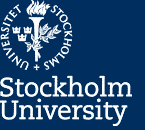OECD’s division for higher education is a modest part of a very large organisation. This, however, doesn’t stop it from having big ambitions for its two new, interrelated initiatives starting in 2017. The first part is a large benchmarking project that will measure the quality of the various member states’ different higher education systems, elucidate the differences between them and highlight good examples. The project covers both governance and available resources and is concerned with education, research, and collaboration. The last of these is called “engagement,” which would seem to promise a broader approach, but, when it comes down to it, uses highly conventional indicators – mostly patents, licenses, and spinoff- and start-up companies. The second part is a deep analysis of important areas within higher education with the first examining how “in tune” education is with the job market, measuring this at the systemic level in selected countries.

The degree to which OECD’s approach is entirely quantitative is striking. It is also clear that, as a rule, analysis stops at the national level. Thus, unfortunately, the results are of limited value (aside from providing a new weapon for education policy debates) in that they cannot be analysed more granularly at multiple levels. The enormous investigative machine that has been set in motion also overlaps with current evaluation and ranking projects.
UNESCO, which previously has an entire division for higher education, has now shrunk to a team of just seven people. They work on quality assurance regionally, of course (only 20 countries in Africa have quality assurance agencies right now, for example), but also internationally, organising a major international conference on quality in higher education in 2018. Another major issue for them is internationalisation, specifically in areas of credit transfer and mobility. Five regional conventions have been ratified and since 2011 a global convention which has been approved by all countries with the exception of the US. The third key area is IT in higher education with an eye toward fulfilling the fourth goal of sustainable development; how can information technology contribute to educating everyone, reaching new types of students and promoting lifelong learning.
As always, it’s good to have a global perspective when reflecting on the Swedish milieu. The potential strength of the Swedish system, having individual courses as the basic unit of education, is quite striking to me. By contrast, the rest of the world is grappling with UNESCO over how they can convince educational institutions to offer something other than long, full-programme studies in order to attract lifelong learners. Stockholm University, as you know, has the largest number of free-standing courses in the country. Naturally we need to take time to reflect on the offerings and scope, important work that is already conducted internally. The flip side of these free-standing courses, however, can create a problem with student completion rates, which is one of our bigger challenges.
Another challenge is the work within international networking, giving an important framework and support to the international work that our researchers and teachers already do naturally. It’s about setting the right priorities among the many organisations and other possibilities on offer. Stockholm University is currently strengthening its support for internationalisation efforts by appointing Maria Wikse as the “Head of International Affairs” on 1 October; after 10 years at the Swedish Foundation for Humanities and Social Sciences, Maria is returning to us. It’s an important strategic role for our future, and we warmly welcome her!


